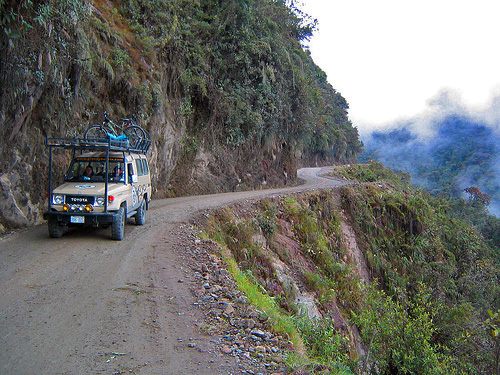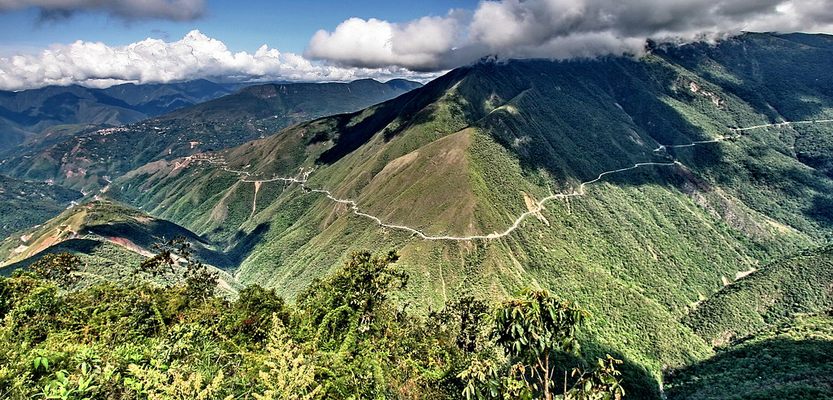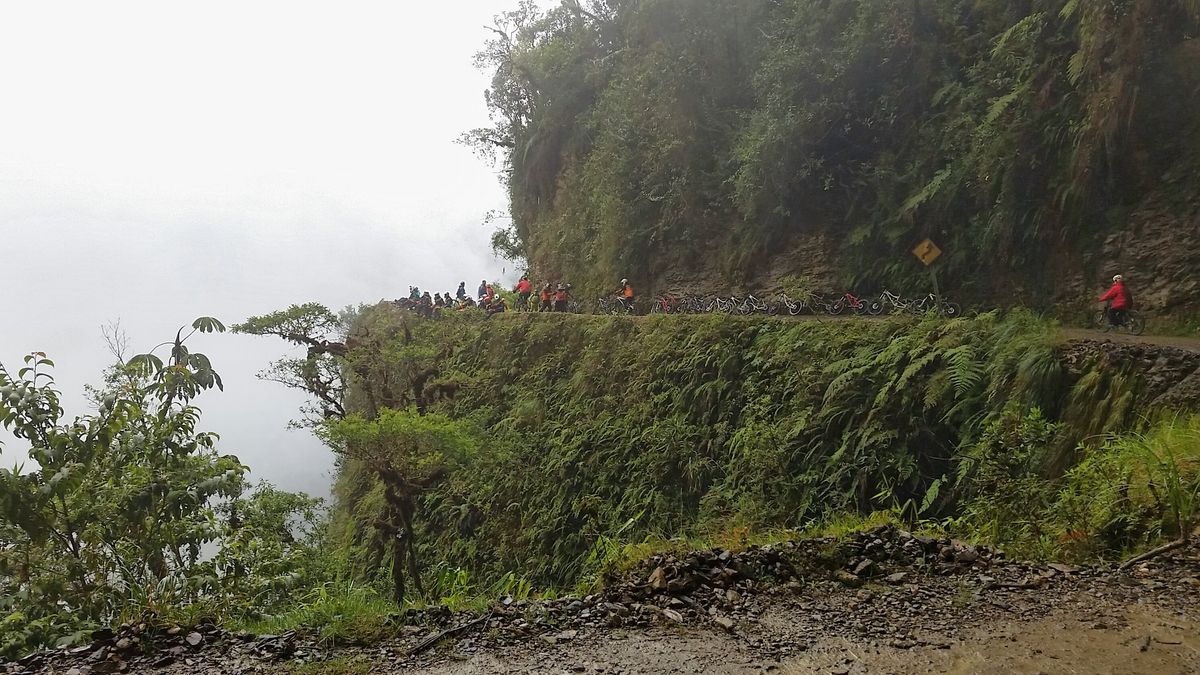About
Due to abysmal driving conditions, Yungas road in Bolivia has earned the nickname "Death Road," and is included in several lists of the planet's most dangerous routes.
The road connects the Bolivian capital of La Paz with the low-lying region of Yungas in the Amazonian rainforest. In order to do so, the road must traverse the mighty Cordillera Oriental mountain chain. Starting from La Paz, the world's highest capital at 3,660 meters in altitude, Yungas road first climbs to 4,650 meters at La Cumbre Pass and then makes a steep descent to the town of Coroico, at an altitude of only 1,200 meters. This drop of over 3,650 meters is one of the longest stretches of continuous downhill road in the world. By some estimates, between 200 and 300 people die a year on the road.
Built in the 1930s by Paraguayan prisoners during the Chaco War, at places, it was cut into the steep cliffside. One side of the road is solid rock, and the other falls off into a 600-meter abyss. Most of the road is only 3.5 meters wide, and some sections are unpaved, without guardrails. Warm and humid winds from the Amazon hit upon the eastern slopes of Andes bringing heavy rains and fog drenching the already dangerous road in torrents of water. There are numerous mudslides and tumbling rocks, and small waterfalls occasionally rain down from the cliff sides.
To make matters even worse, one is likely to meet groups of cyclists along this road. Internet fame turned this road into a destination for extreme sports enthusiasts, especially downhill bikers. Several tour operators organize such trips. Prices range roughly between $50-$100. At least 13 riders have died in various accidents in last the 10 years. Besides safety, travelers should also keep in mind that the downhill ride offers a change in temps from freezing to sweltering, thus, they should dress accordingly.
Such conditions made several precautions necessary. Special rules apply at Yungas road. While the rest of Bolivia drives on the right side, here vehicles drive on the left. A driver on the left has a better view of the edge of the road. Furthermore, descending vehicles never have the right of way and must move to the outer edge of the road. This forces fast vehicles to stop so that passing can be negotiated safely.
The government of Bolivia is trying to improve safety on its roads, but construction in such extreme terrain is costly and slow. The northernmost section of the original road has been replaced by an alternative route with a modern and much safer two-lane motorway.
The road has gained certain attention in popular culture, including Top Gear's Bolivia Special and the BBC show World's Most Dangerous Roads.
Update as of October 2020: Today, a new paved highway has safely diverted most vehicle traffic including buses off of the so-called Death Road leaving the original curving, narrow, dirt route to guided bike tours and individual drivers looking for an adventure.
Related Tags
Know Before You Go
Take some extra money with you if you fancy zip sliding down three zip lines at speeds of up to 52 miles/hr at the village at the bottom of the road.
Community Contributors
Added By
Published
August 31, 2009
Sources
- http://www.thecircumference.org/experiences/death-road
- http://www.slate.com/blogs/atlas_obscura/2013/10/24/a_terrifying_tour_of_the_world_s_most_dangerous_road_north_yungas_in_bolivia.html
- https://www.twoscotsabroad.com/death-road-bolivia/
- https://www.stuff.co.nz/travel/news/110153588/cycling-tourists-big-users-of-bolivias-death-road-nowadays
- https://rove.me/to/bolivia/the-death-road-camino-a-los-yungas
- https://theculturetrip.com/south-america/bolivia/articles/10-things-to-know-before-visiting-the-death-road-bolivia/
- https://trans-americas.com/death-road-bolivia-drive/

































































